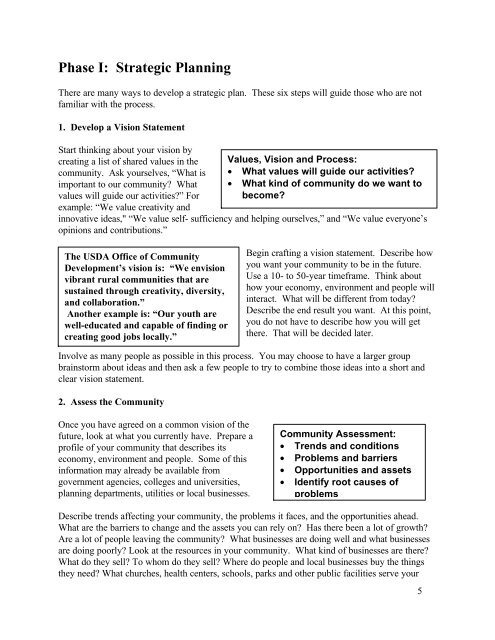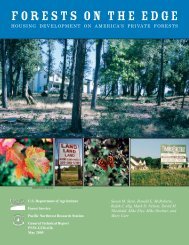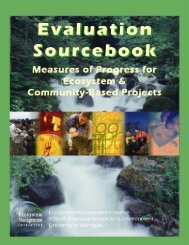A Guide to Strategic Planning for Rural Communities - USDA Rural ...
A Guide to Strategic Planning for Rural Communities - USDA Rural ...
A Guide to Strategic Planning for Rural Communities - USDA Rural ...
Create successful ePaper yourself
Turn your PDF publications into a flip-book with our unique Google optimized e-Paper software.
Phase I: <strong>Strategic</strong> <strong>Planning</strong><br />
There are many ways <strong>to</strong> develop a strategic plan. These six steps will guide those who are not<br />
familiar with the process.<br />
1. Develop a Vision Statement<br />
Start thinking about your vision by<br />
creating a list of shared values in the<br />
community. Ask yourselves, “What is<br />
important <strong>to</strong> our community? What<br />
values will guide our activities?” For<br />
example: “We value creativity and<br />
Values, Vision and Process:<br />
• What values will guide our activities?<br />
• What kind of community do we want <strong>to</strong><br />
become?<br />
innovative ideas," “We value self- sufficiency and helping ourselves,” and “We value everyone’s<br />
opinions and contributions.”<br />
The <strong>USDA</strong> Office of Community<br />
Development’s vision is: “We envision<br />
vibrant rural communities that are<br />
sustained through creativity, diversity,<br />
and collaboration.”<br />
Another example is: “Our youth are<br />
well-educated and capable of finding or<br />
creating good jobs locally.”<br />
Begin crafting a vision statement. Describe how<br />
you want your community <strong>to</strong> be in the future.<br />
Use a 10- <strong>to</strong> 50-year timeframe. Think about<br />
how your economy, environment and people will<br />
interact. What will be different from <strong>to</strong>day?<br />
Describe the end result you want. At this point,<br />
you do not have <strong>to</strong> describe how you will get<br />
there. That will be decided later.<br />
Involve as many people as possible in this process. You may choose <strong>to</strong> have a larger group<br />
brains<strong>to</strong>rm about ideas and then ask a few people <strong>to</strong> try <strong>to</strong> combine those ideas in<strong>to</strong> a short and<br />
clear vision statement.<br />
2. Assess the Community<br />
Once you have agreed on a common vision of the<br />
future, look at what you currently have. Prepare a<br />
profile of your community that describes its<br />
economy, environment and people. Some of this<br />
in<strong>for</strong>mation may already be available from<br />
government agencies, colleges and universities,<br />
planning departments, utilities or local businesses.<br />
Community Assessment:<br />
• Trends and conditions<br />
• Problems and barriers<br />
• Opportunities and assets<br />
• Identify root causes of<br />
problems<br />
Describe trends affecting your community, the problems it faces, and the opportunities ahead.<br />
What are the barriers <strong>to</strong> change and the assets you can rely on? Has there been a lot of growth?<br />
Are a lot of people leaving the community? What businesses are doing well and what businesses<br />
are doing poorly? Look at the resources in your community. What kind of businesses are there?<br />
What do they sell? To whom do they sell? Where do people and local businesses buy the things<br />
they need? What churches, health centers, schools, parks and other public facilities serve your<br />
5






